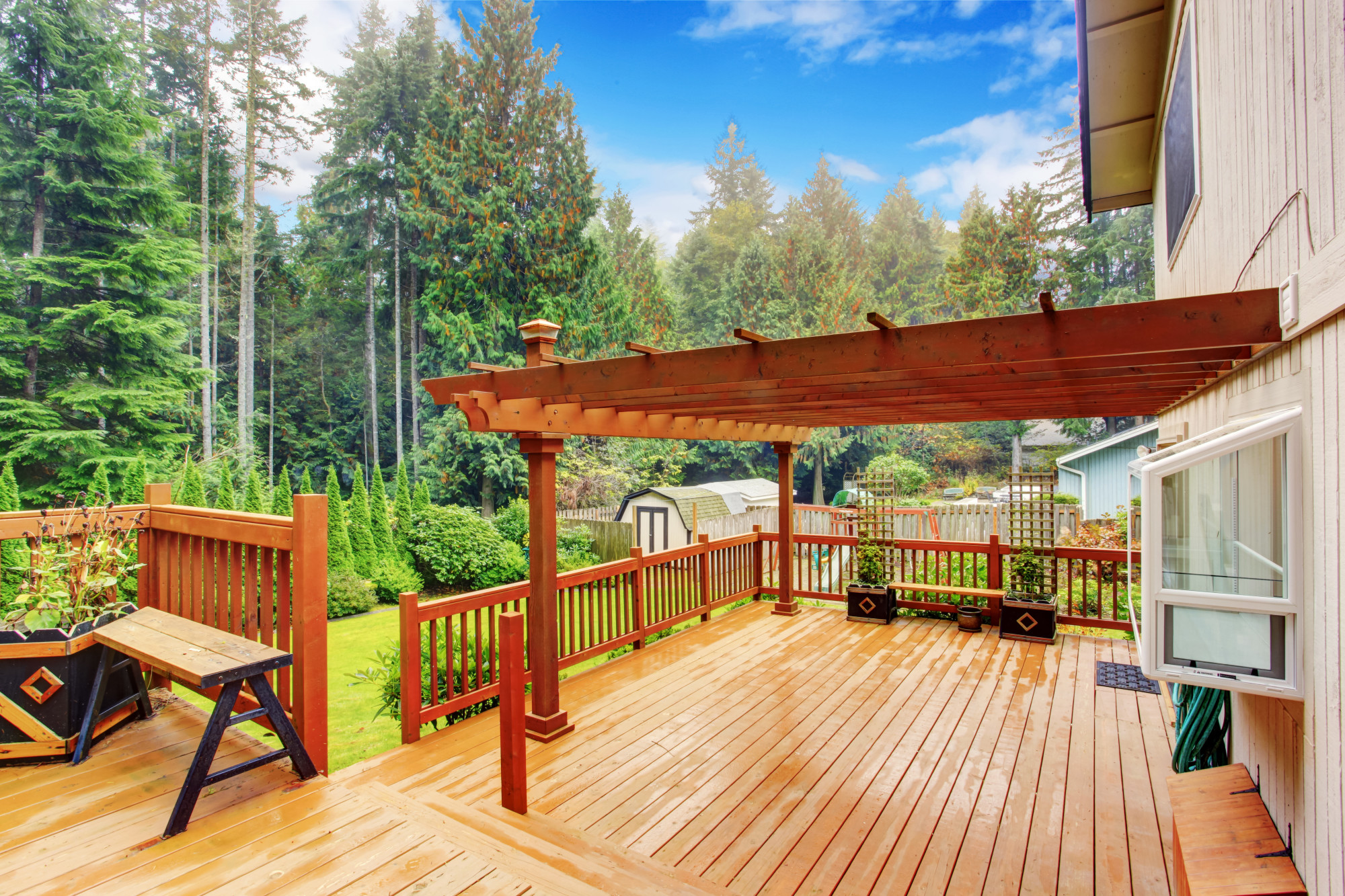You’ve been looking for ways to spruce up your patio and you’ve repeatedly come across this strange word: pergola. What is a pergola?!
Great question, and one that we can answer in detail. Below, we’re going to cover everything there is to cover about pergolas, from pergola designs to the art of building a pergola and more. Ready? Let’s go!
So, What is a Pergola?
First and foremost, we should answer the question of the hour: what is a pergola? A pergola is a four-legged structure that supports a shaded top. It stands 10 to 15 feet tall and is traditionally used on patios and over gardens.
Pergolas are beneficial for a number of reasons, some of which we’ll discuss below.
Pergolas Provide Shade
If you’re hanging out on your patio, it’s probably sunny outside. Unfortunately, it might be a little too sunny. This is where a pergola can help.
Pergolas can provide some much-needed shade, reducing overall sun exposure and making for a much more comfortable environment. Note, though, that they don’t block the sun entirely. Their tops generally possess a lattice design; in other words, they contain open spots.
Pergolas Contain the Congregational Area
A bare patio has its benefits. But it can feel a bit uncomfortable to hang out on. Why? Because it has no congregational center and can feel a little unorganized.
By adding a pergola to a patio, however, you can create that congregational center. A pergola provides order to the area, helping to establish a sense of coziness and comfort.
Pergolas Offer a Bit of Privacy
Another benefit of pergolas is that they offer up a bit of privacy. While they’re not opaque, by any means, they do help to hide things away. If you’re sitting under a pergola, you’ll likely experience a sense of protection.
Note, you’ll also have the option to add drapes to your pergola. So, if you really want it, you can obtain full privacy.
Pergolas Enhance the Aesthetics of Their Respective Properties
Looking to enhance the aesthetics of your patio area? It’s as simple as adding a pergola. A pergola can offer up a variety of aesthetic advantages and can even be painted the color of your choice.
You could also use your pergola to hang potted plants or to be the host of ivy. This would bring a natural ambiance to your patio area.
Common Pergola Materials
Pergolas can be made out of a wide variety of materials. The most common of these materials include the following.
Wood
The most common pergola material is wood. Why is it so common? Because it looks great and is fairly affordable.
Note, though, that there is a downside to wood. Namely, it requires regular maintenance. If you don’t stain and seal it on a consistent basis, it will begin to warp and will give in long before its time.
On the other hand, if you do supply it with proper maintenance, it can last for decades. You can even paint it if you wish.
Engineered Wood
Similar to wood is engineered wood, a wood/synthetic hybrid that does a much better job against moisture exposure. This material offers a similar aesthetic to wood (though it doesn’t look quite as natural) but generally requires less maintenance.
It’s fairly durable, capable of lasting 10 to 20 years. And, comparatively speaking, it’s quite affordable.
Wrought Iron
If you’re looking for something a little more regal, you might consider going with wrought iron. This metal material is luxurious in its aesthetic and can provide your patio with an instant shot of prestige.
It’s extremely durable as well, capable of lasting 50 to 100 years. Note, though, that in order to get the most out of it, you’ll need to regularly de-rust and re-paint it. This, along with its initial purchase price, can make it a little expensive.
Vinyl
Another material to consider is vinyl, a synthetic material that offers excellent durability above-average aesthetics. Available at a reasonable price, it provides quite a bit of bang for its buck.
And did we mention that it scarcely requires maintenance? At most, it will need to be cleaned from time to time.
The big argument against vinyl is that it looks cheap. This is due to the fact that it’s man-made and thus contains no natural element.
But that doesn’t mean that there aren’t attractive options out there. If you’re at all interested, you’re advised to browse your options. There might just be something that catches your eye.
Decorating a Pergola
A pergola alone offers an attractive and inviting aesthetic. However, it’s common to decorate pergolas with additional accessories.
For instance, some like to put stringed lights on their pergolas. This not only helps to light up the area around the pergola but also enhances the atmosphere.
Others like to place plants on their pergolas, either by hanging them in pots or by growing ivy around the pergola’s poles. In either case, the pergola is provided with an attractive natural aesthetic.
One of the most common practices is to equip the pergola with drapes or curtains. This gives the pergola a flowing quality and also allows for privacy when desired.
There are all sorts of things you can do to bring a pergola to life. Use your imagination and your pergola will soon become the aesthetic centerpiece of your backyard
Interested in Assembling a Pergola?
You asked “what is a pergola?” and we have answered. As you can see, pergolas can have a huge positive impact on their respective properties. So, if you’re looking to improve the value of your property, assembling a pergola might be just the thing to do.
Interested in assembling a pergola in Katy, Texas? Sahara Construction & Custom Pools has you covered.
Contact us today to discuss specifics!




